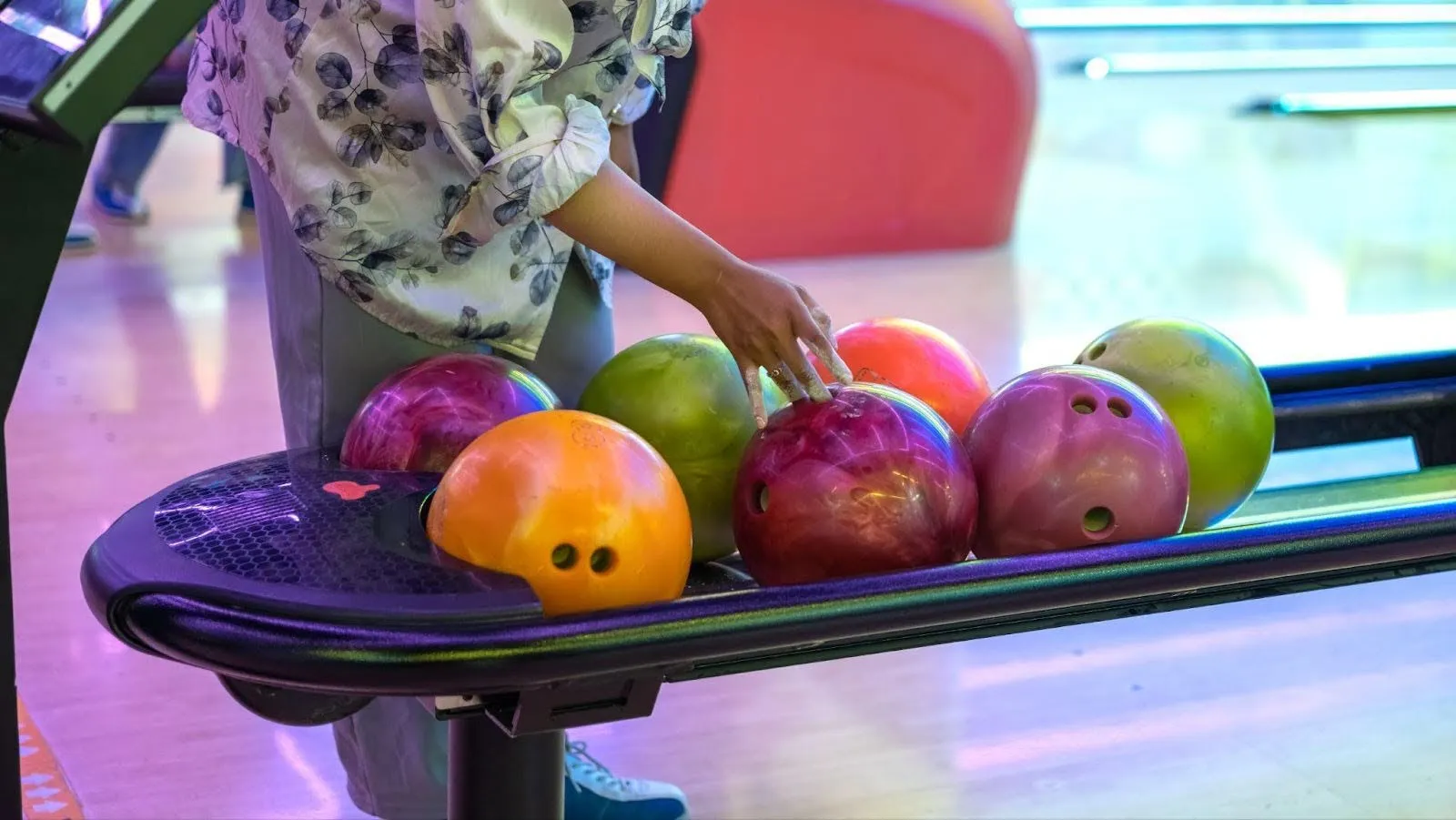Most bowlers spend hours perfecting their stance, release, and follow-through, yet many overlook one of the most important parts of the game — the bowling ball itself. Technique matters, but without the right equipment, even the best form will not deliver consistent results.
Choosing the perfect bowling ball transforms your performance. When your ball matches your style and comfort level, you gain better control, more accuracy, and improved scores. This guide will walk you through the essential factors to consider so you can confidently select the perfect bowling ball for your game.
Why your bowling ball choice matters
Control, accuracy, and power
The ball you use directly affects your control, accuracy, and power. A well-matched ball allows you to release smoothly, keep your shots consistent, and generate enough force to knock down pins efficiently. Using a ball that does not fit your style or body mechanics often leads to erratic throws and unnecessary strain.
House balls vs. custom-fitted balls
Many bowlers start with house balls, which are one-size-fits-all. While convenient, they rarely provide the comfort or precision needed for steady improvement. The finger holes may feel awkward, the weight may not suit your strength, and the grip often limits the spin you can apply.
A custom-fitted ball, however, is tailored to your hand size, grip preference, and playing style. That personalization creates a smoother release and better pin action.
Long-term benefits of the right match
Investing in the perfect bowling ball pays off in the long run. A properly chosen ball enhances performance and reduces the risk of injury and fatigue. With improved comfort and consistency, you build confidence and enjoy the game more, making every trip to the lanes rewarding and exciting.
Determining the right weight
A good starting point for choosing the correct weight is to select a ball that equals about 10 percent of your body weight, with a maximum limit of 16 pounds. This guideline ensures the ball feels substantial enough to generate strong pin action without becoming too difficult to handle.
Heavy versus light performance
Heavier balls deliver more impact, often leading to better pin carry and higher strike potential. However, if the ball feels too heavy, your accuracy and control will suffer.
Lighter balls are easier to throw and place with precision, but they may lack the momentum needed to knock down stubborn pins.
Finding the right balance between control and hitting power is key to improving your overall game.
Comfort and injury prevention
Comfort should always guide your decision. A ball that strains your arm or causes fatigue will limit both performance and enjoyment. The ideal weight allows you to bowl several games without discomfort. Prioritizing comfort improves consistency and helps prevent injuries, keeping you on the lanes longer and performing at your best.

What are coverstock materials?
The outer shell of a bowling ball, called the coverstock, greatly influences how the ball reacts on the lane. Choosing the right material can dramatically change your bowling experience, so it is important to understand the differences before deciding.
Plastic and polyester
Plastic, often referred to as polyester, is the most affordable option and ideal for beginners. These balls offer minimal hook potential, which makes them perfect for learning straight shots and developing consistency. Their smooth surface also reduces lane friction, making them good for picking up spares.
Urethane
Urethane provides more hook than plastic while still offering solid control. It grips the lane better, especially on oily conditions, making it a smart choice for bowlers who want predictable movement. This material bridges the gap between entry-level and performance equipment, giving players more versatility.
Reactive resin
Reactive resin revolutionized the sport by creating high hook potential and stronger pin action. These balls generate more friction with the lane, allowing advanced players to curve their shots with precision. They require greater skill to master, but the payoff is enhanced performance and higher scoring opportunities.
Particle or proactive
Particle, also known as proactive, combines reactive resin with added textured materials to create maximum traction. This coverstock is for professionals who bowl on heavily oiled lanes and need absolute control. Its ability to dig into the lane surface produces powerful hooks and reliable consistency under challenging conditions.
Core types and ball motion
The core, hidden inside every bowling ball, plays a crucial role in how the ball travels down the lane. Its shape influences rotation, hook potential, and overall control. Understanding core design helps you choose a ball that matches your style and skill level.
Pancake core
The pancake core is the simplest design and is often found in entry-level balls. Its flat, disc-like shape creates minimal flare and promotes straighter shots. This core is perfect for beginners learning the basics of accuracy or for bowlers who want a reliable option for spare shooting.
Symmetrical core
A symmetrical core provides even weight distribution, resulting in a smoother and more predictable ball motion. It offers balance and control, making it ideal for players who value consistency. Bowlers who prefer a steady, controllable hook often choose symmetrical cores because they deliver a clean and reliable reaction.
Asymmetrical core
The asymmetrical core introduces complexity by placing weight unevenly within the ball. This design creates greater hook potential and allows advanced players to manipulate their ball path with precision. Asymmetrical cores respond sharply to lane conditions, allowing bowlers to fine-tune their shots for maximum pin action.
Influence on ball reaction
Core design directly impacts how the ball reacts to the lane surface. Pancake cores keep shots straighter, symmetrical cores produce smooth arcs, and asymmetrical cores generate sharper angles and more dramatic motion.
Choosing the right grip
The way you hold a bowling ball determines how smoothly it releases, how much spin it creates, and how comfortable it feels throughout your game. Select the right grip for best performance and long-term enjoyment.
Conventional grip
The fingers slide into the holes up to the second knuckle in a conventional grip. This style offers security and control, making it a popular choice for beginners and casual bowlers. Because the ball feels more stable in the hand, it reduces the risk of slips during release, but it limits the amount of hook and spin you can generate.
Fingertip grip
A fingertip grip places the fingers only up to the first knuckle, leaving more of the ball in the palm. This position gives experienced bowlers greater leverage to apply spin and hook, which adds power and pin action. While handling the ball requires more skill and comfort, it opens the door to advanced techniques and improved scoring potential.
The value of professional drilling
No matter which grip you prefer, professional drilling makes a significant difference. A ball custom-drilled to fit your hand ensures that the holes align with your grip style and finger span, reducing strain and improving release.

Find your perfect ball and play your best at Skinny Dogz
Once you have the perfect ball, the best way to put it to the test is on high-quality lanes in a fun, welcoming atmosphere. Skinny Dogz offers the ideal setting, combining a professional-grade bowling experience with a vibrant arcade and great food.
It is more than a place to play — it is a place to compete, connect, and create lasting memories. Bring your ball, bring your friends, and enjoy the ultimate bowling experience at Skinny Dogz. Reserve your lane now!



